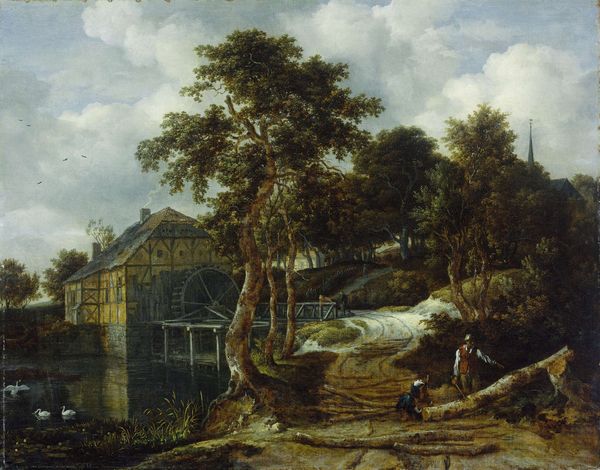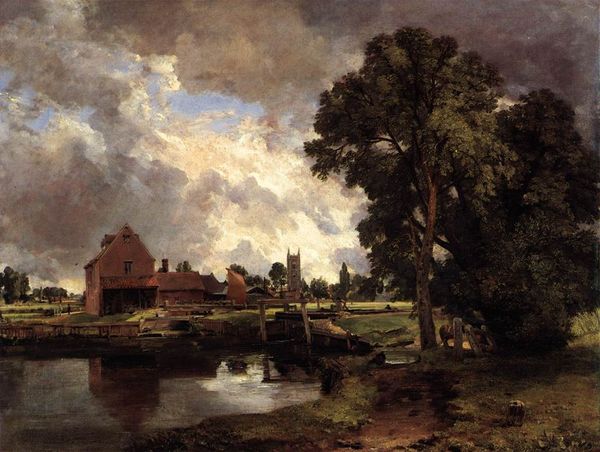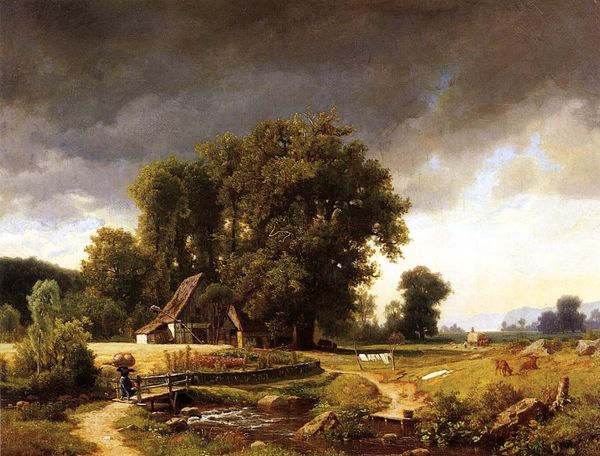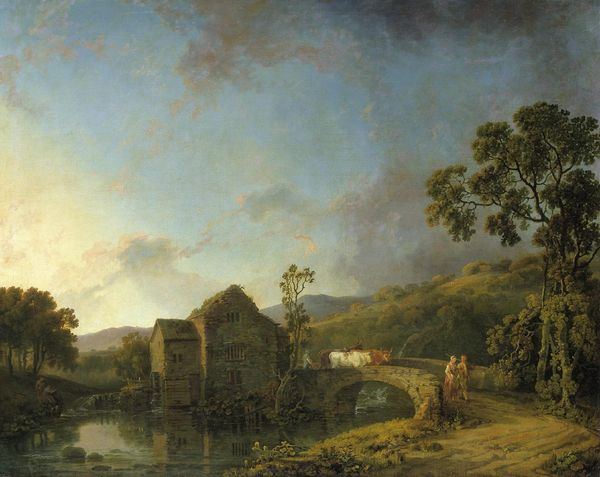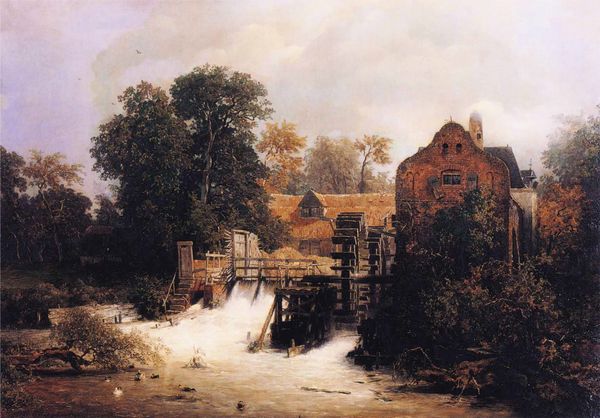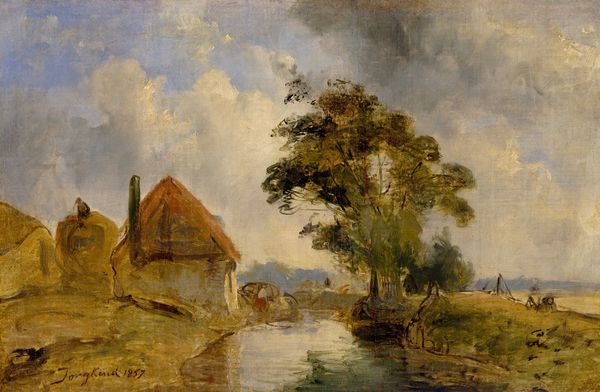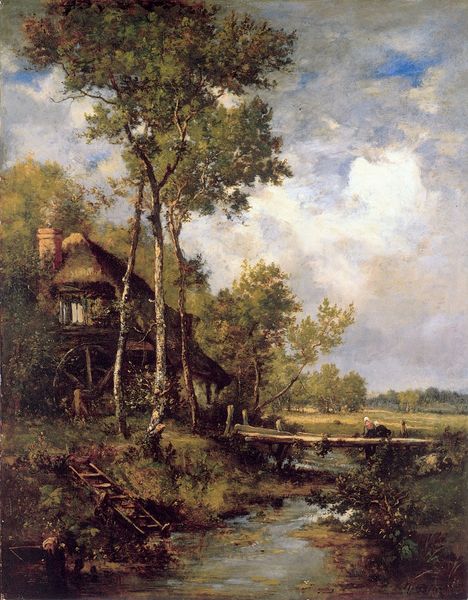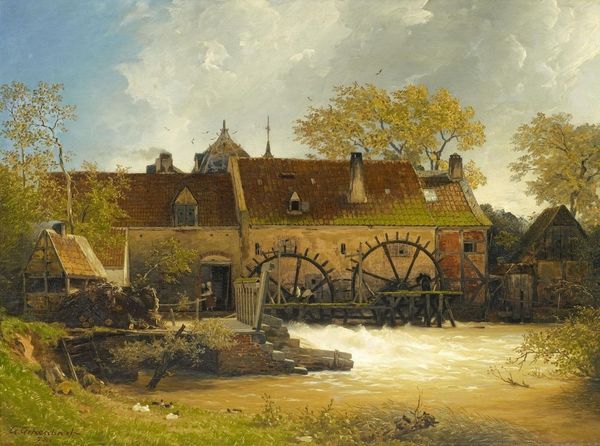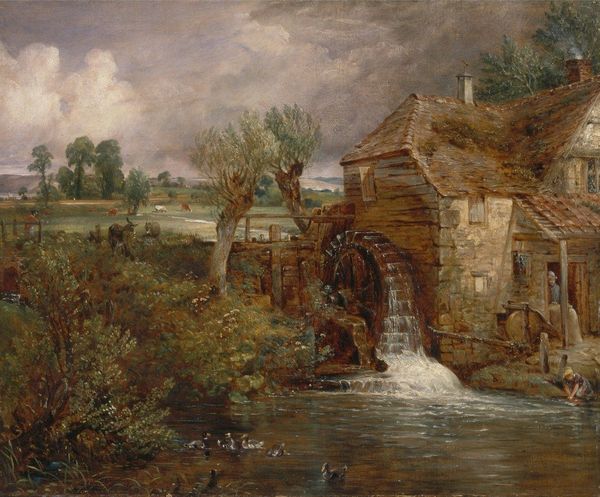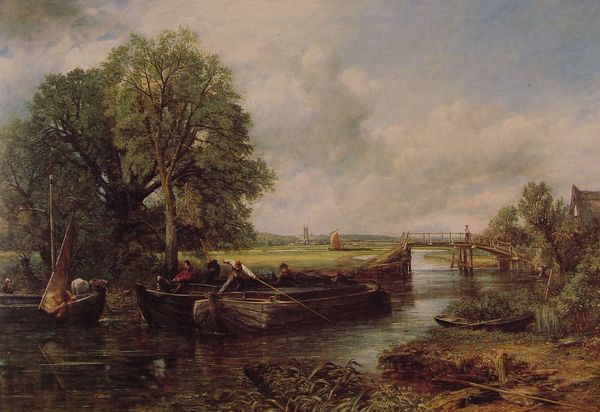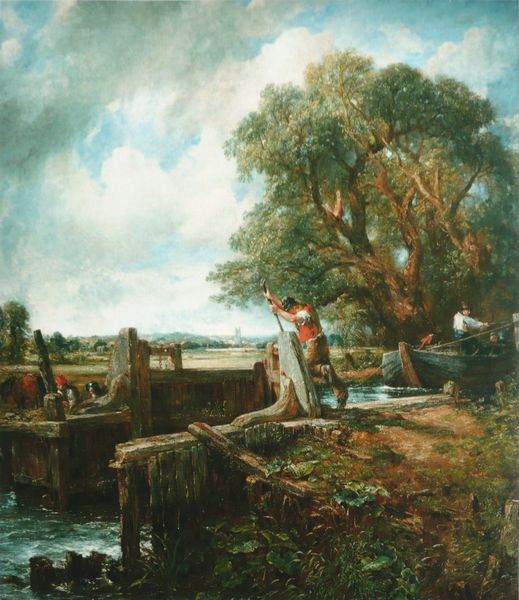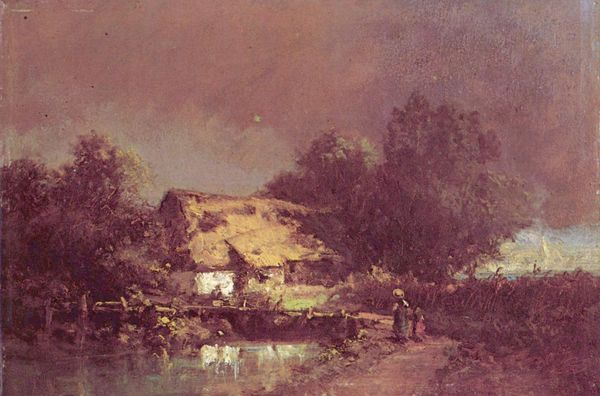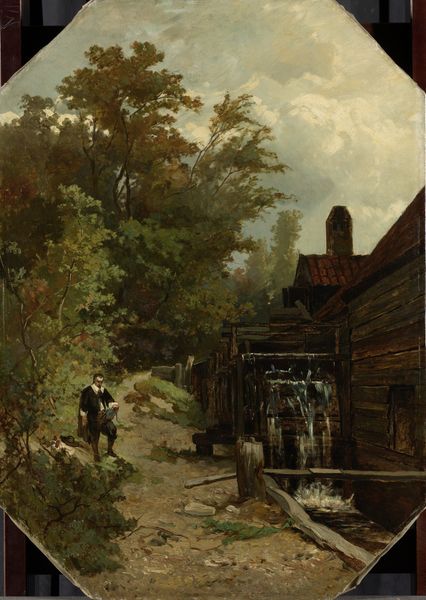
Copyright: Public domain
Editor: Here we have Andreas Achenbach’s “Westphalian Watermill,” painted in 1863. It's an oil painting depicting, well, a watermill! I’m struck by the stillness within the scene, despite the rushing water. What first grabs your attention when you look at it? Curator: The water itself is compelling. Water often serves as a symbol of life's continuous flow and its reflective nature mirrors introspection. Do you notice how the mill, although central, seems almost absorbed by the surrounding landscape? It evokes a powerful sense of the cycle of life and the relationship between nature and human existence. Editor: Yes, the mill feels integrated into the environment rather than imposing on it. I hadn’t thought about the water as symbolic though; I was mostly caught up in the realism of the scene. Curator: Realism is certainly present, but within that framework lies a deeper symbolism. Consider the turning wheel of the mill. Does that rotational motion perhaps signal a sense of time passing, change, and even destiny, a sense heightened in relation to our human endeavors? Editor: I see what you mean! And the figures on the bridge; are they included to represent our constant interaction with the natural world and the machinery we create? Curator: Precisely! The human element placed strategically within nature encourages us to reflect on our place and actions within this much grander narrative. Every element seems meticulously placed to generate reflection about humanity, the world, and where we exist in that cycle. Editor: That's fascinating! It’s amazing how much more there is to discover when we start looking at art through a symbolic lens. Curator: Indeed. Achenbach’s use of symbols here is a masterful way of engaging the viewer beyond just the visual. It becomes an intellectual and emotional journey.
Comments
No comments
Be the first to comment and join the conversation on the ultimate creative platform.
